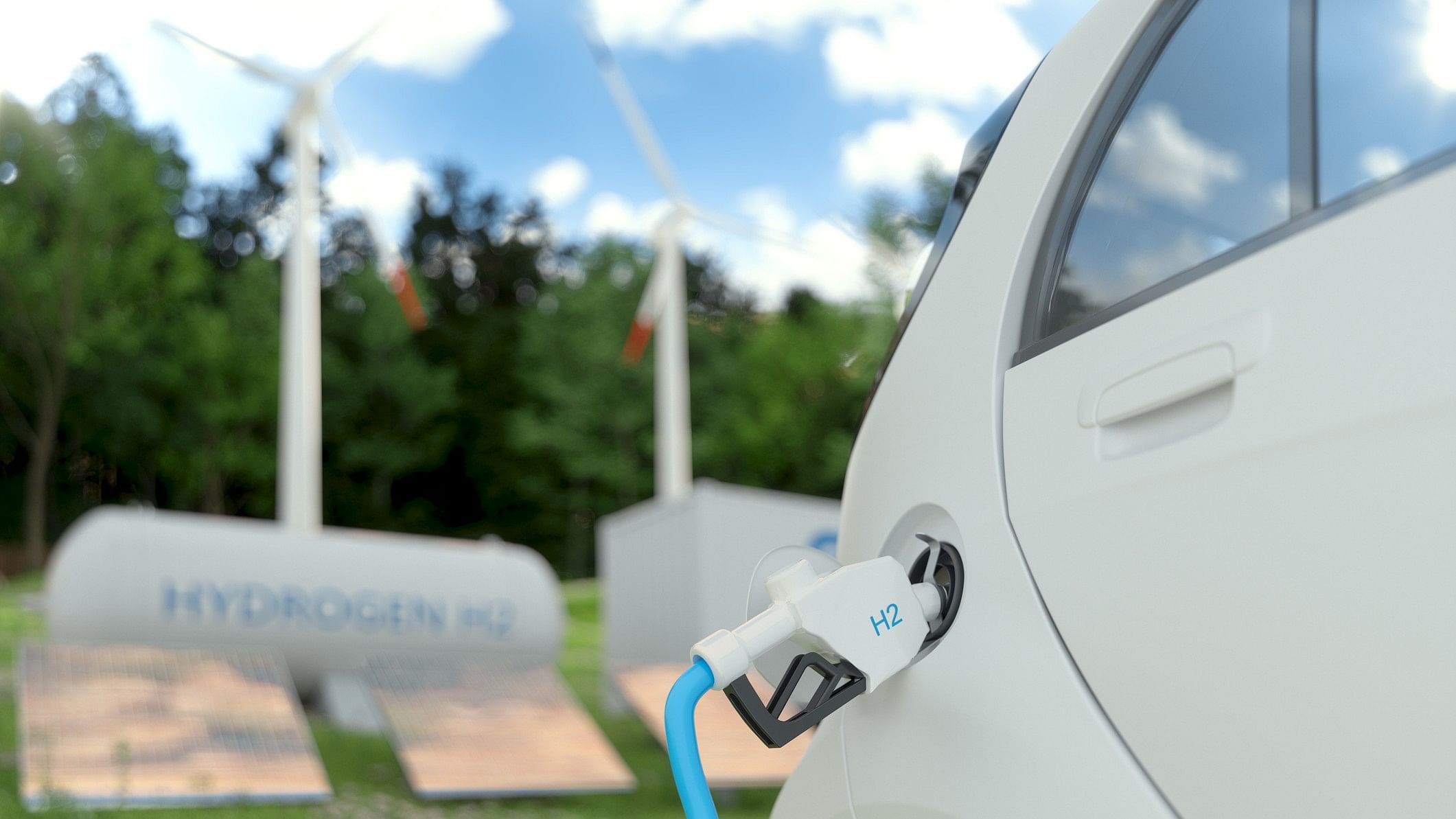
Representative image showing an EV.
Credit: iStock Photo
India has committed to cut the carbon intensity of its economy by 45 per cent by 2030 over 2005 levels and achieve net zero emissions by 2070. Green hydrogen, which is produced by splitting water using renewable electricity, is seen as a key to achieving the net-zero carbon emission targets.
Hydrogen is being used in several industries including refineries, fertilizers, and steel. There is growing interest in boosting the use of green hydrogen in the transportation sector.
In a bid to create an ecosystem based on green hydrogen, the central government last year came out with the National Green Hydrogen Mission with an outlay of Rs 19,744 crore up to the financial year 2029-30. As part of this mission, the government is in the process of implementing a pilot project for the use of green hydrogen in the transport sector. The deadline for submission of proposals for research and development (R&D) of the scheme has been extended till April 27. The R&D scheme is proposed to be implemented with a budgetary outlay of Rs 400 crore.
Hydrogen Vehicles
India is among the first countries to experiment with hydrogen in the transportation sector. In the early 2000s, Indian Oil Corporation (IOC) and Mahindra & Mahindra jointly developed a hydrogen-powered three-wheeler. Toyota Mirai car, which is powered by hydrogen, was launched in India in March 2022. The vehicle was launched as part of a pilot project conducted jointly by Toyota Kirloskar Motor and the International Centre for Automotive Technology (ICAT). Tata Motors in collaboration with the IOC unveiled hydrogen-powered buses last year. A number of hydrogen-powered vehicles in different categories, including three-wheelers, cars, and buses, are scheduled to be launched this year.
“For India, the equitable solution is not to replace one fossil fuel with another but to leapfrog to renewables and green hydrogen”, Adani Group chairman Gautam Adani wrote in a blog post for the World Economic Forum recently.
Adani further noted that “for India, green hydrogen presents a home-grown opportunity as it holds the promise, along with renewables, to lift the yoke of expensive energy imports from its economy – more than $230 billion per year (Rs 19.1 trillion) for crude imports.
EV vs Hydrogen
Fuel Cell Electric Vehicles (FCEVs) use a propulsion system similar to that of Electric Vehicles (EVs), where energy stored as hydrogen is converted to electricity by the fuel cell. Unlike conventional internal combustion engine vehicles, these vehicles produce no harmful tailpipe emissions. The FCEVs only emit water vapor and warm air.
Like EVs, FCEVs also use electricity to power an electric motor, but with a crucial difference. While EVs draw electricity from only a battery, FCEVs produce electricity using a fuel cell powered by hydrogen. This means hydrogen vehicles effectively have their own power plant on board. Fuel cells generate electricity by combining hydrogen with oxygen. Hydrogen is stored in one or more tanks in the vehicle while oxygen comes from the ambient air. The process is known as reverse electrolysis.
One major criticism of electric vehicle technology is that it does not eliminate emissions. Effectively, the emission is just moving from one place to the other in the chain. Electricity, which is used for charging batteries of EVs, is mostly produced through fossil fuels, notably coal. Green hydrogen is expected to significantly solve this problem. Green hydrogen is deemed as the fuel for the future with immense potential to help India meet its decarbonisation targets.
Is hydrogen really green?
Depending on the nature of the method of its extraction, hydrogen can be put into three categories - grey, blue, and green. Hydrogen produced mostly through carbon-intensive processes is referred to as grey. It is produced by coal or lignite gasification (black or brown), or via a process called steam methane reformation (SMR) of natural gas or methane (grey). Blue hydrogen is comparatively cleaner. It is produced via natural gas or coal gasification combined with carbon capture storage (CCS) or carbon capture use (CCU) technologies to reduce carbon emissions, while green hydrogen is produced through renewable energy and hence the cleanest.
According to the International Renewable Energy Agency, only about 1 per cent of global hydrogen output is produced with renewable energy. At the end of 2021, almost 47 per cent of the global hydrogen production was from natural gas, 27 per cent from coal, 22 per cent from oil (as a by-product), and only around 4 per cent from electrolysis. Electricity had a global average renewable share of about 33 per cent in 2021.